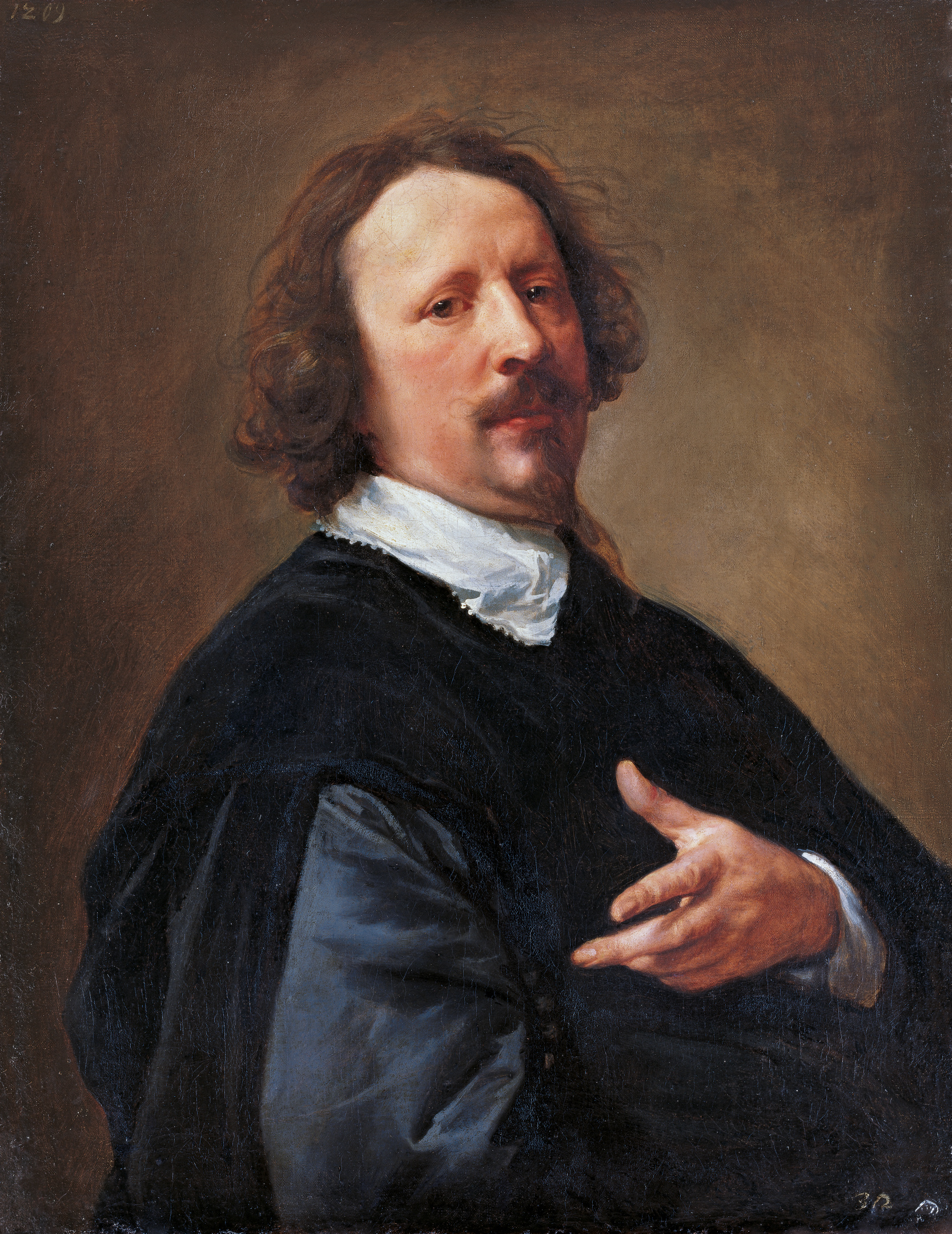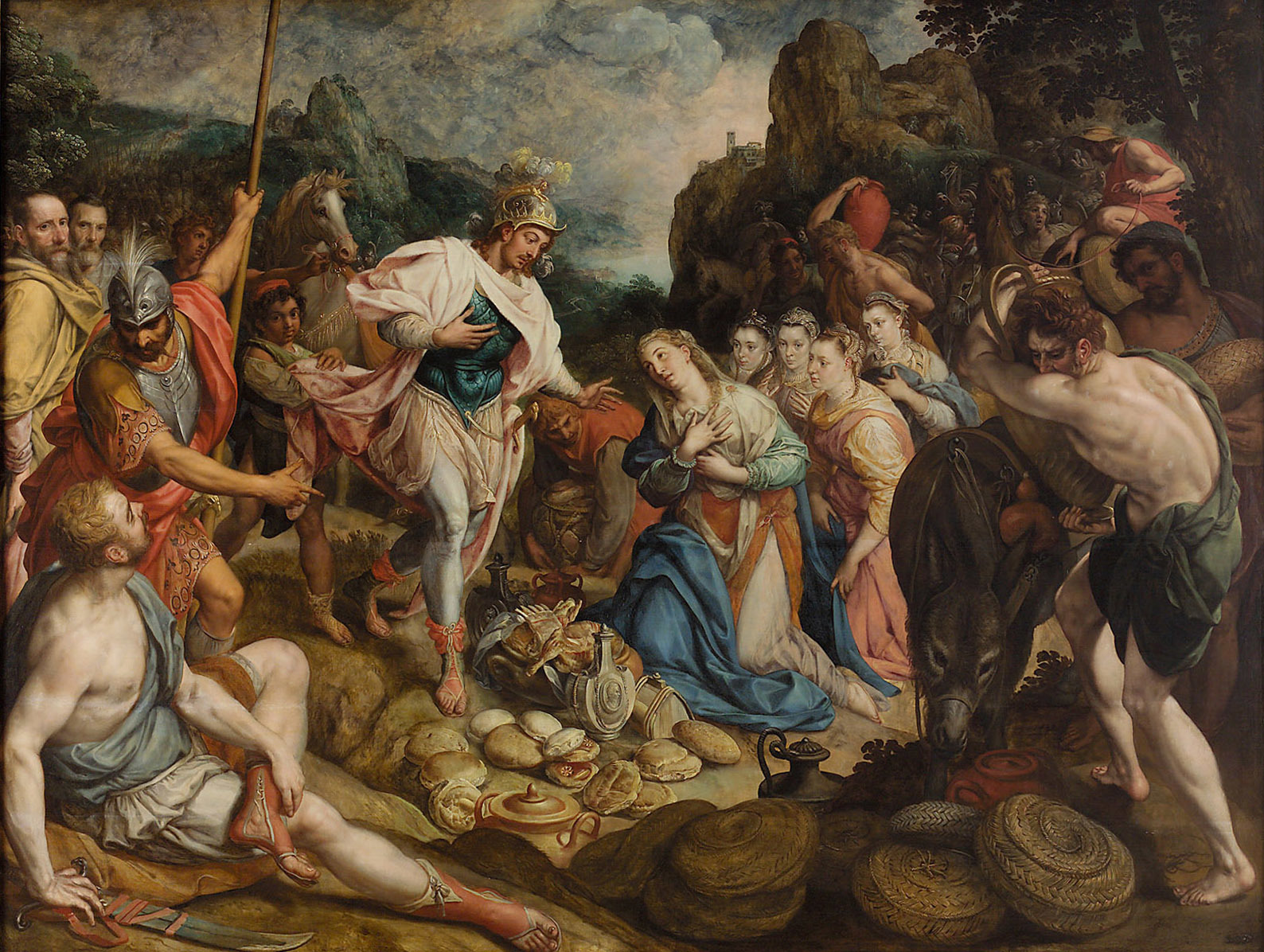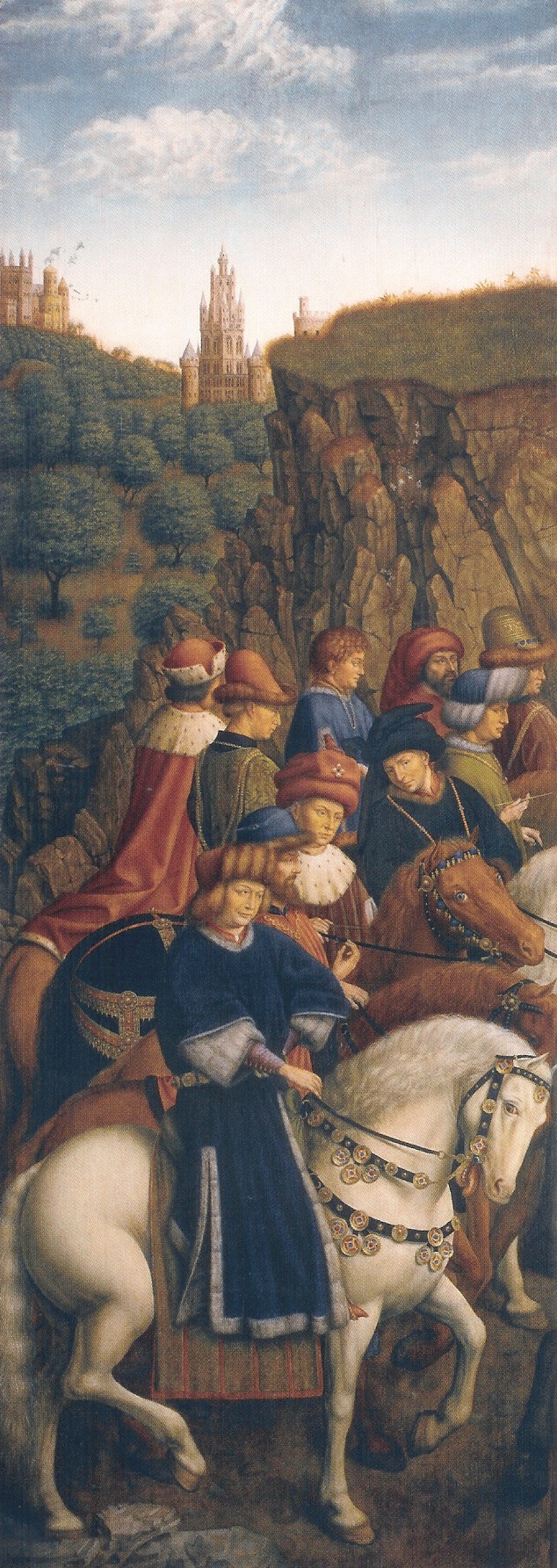|
Saint Bavo Cathedral
Saint Bavo's Cathedral, also known as Sint-Baafs Cathedral ( nl, Sint Baafskathedraal), is a cathedral of the Catholic Church in Ghent, Belgium. The 89-meter-tall Gothic building is the seat of the Diocese of Ghent and is named for Saint Bavo of Ghent. It contains the well-known ''Ghent Altarpiece''. History The cathedral stands on the site of the former Chapel of St. John the Baptist, which was primarily of wooden construction and was consecrated in 942 by Transmarus, Bishop of Tournai and Noyon. Traces of a later Romanesque structure can be found in the cathedral's crypt. Construction of the Gothic church began around 1274. In the subsequent period from the 14th through 16th centuries, nearly continuous expansion projects in the Gothic style were executed on the structure. A new choir, radiating chapels, expansions of the transepts, a chapter house, nave aisles and a single-tower western section were all added. In 1539, as a result of the rebellion against Charles V, who ... [...More Info...] [...Related Items...] OR: [Wikipedia] [Google] [Baidu] |
Ghent
Ghent ( nl, Gent ; french: Gand ; traditional English: Gaunt) is a city and a Municipalities of Belgium, municipality in the Flemish Region of Belgium. It is the capital and largest city of the East Flanders province, and the third largest in the country, exceeded in size only by Brussels and Antwerp. It is a Port of Ghent, port and Ghent University, university city. The city originally started as a settlement at the confluence of the Rivers Scheldt and Leie and in the Late Middle Ages became one of the largest and richest cities of northern Europe, with some 50,000 people in 1300. The municipality comprises the city of Ghent proper and the surrounding suburbs of Afsnee, Desteldonk, Drongen, Gentbrugge, Ledeberg, Mariakerke (East Flanders), Mariakerke, Mendonk, Oostakker, Sint-Amandsberg, Sint-Denijs-Westrem, Sint-Kruis-Winkel, Wondelgem and Zwijnaarde. With 262,219 inhabitants at the beginning of 2019, Ghent is Belgium's second largest municipality by number of inhabitants ... [...More Info...] [...Related Items...] OR: [Wikipedia] [Google] [Baidu] |
Chapter House
A chapter house or chapterhouse is a building or room that is part of a cathedral, monastery or collegiate church in which meetings are held. When attached to a cathedral, the cathedral chapter meets there. In monasteries, the whole community often met there daily for readings and to hear the abbot or senior monks talk. When attached to a collegiate church, the dean, prebendaries and canons of the college meet there. The rooms may also be used for other meetings of various sorts; in medieval times monarchs on tour in their territory would often take them over for their meetings and audiences. Synods, ecclesiastical courts and similar meetings often took place in chapter houses. Design When part of a monastery, the chapter house is generally located on the eastern wing of the cloister, which is next to the church. Since many cathedrals in England were originally monastic foundations, this is a common arrangement there also. Elsewhere it may be a separate building. Th ... [...More Info...] [...Related Items...] OR: [Wikipedia] [Google] [Baidu] |
Caspar De Crayer
Gaspar de Crayer or Jasper de CrayerName variations: Caspar de Crayer and Gaspard de Crayer (18 November 1584 – 27 January 1669) was a Flemish painter known for his many Counter-Reformation altarpieces and portraits. He was a court painter to the governors of the Southern Netherlands and worked in the principal cities of Flanders where he helped spread the Rubens style.Gaspar de Crayer at the Hans Vlieghe. "Crayer, Gaspar de." Grove Art Online. Oxford Art Online Oxford University Press< ...
[...More Info...] [...Related Items...] OR: [Wikipedia] [Google] [Baidu] |
Viglius
Viglius (October 19, 1507, SwichumMay 5, 1577) was the name taken by Wigle Aytta van Zwichem, a Dutch statesman and jurist, a Frisian by birth. Biography He studied at various universities— Louvain, Dole and Bourges among others—devoting himself mainly to the study of jurisprudence, and afterwards visited many of the principal seats of learning in Europe. His great abilities attracted the notice of Erasmus and other celebrated men, and his renown was soon wide and general. Having lectured on law at the universities of Bourges and Padua, he accepted a judicial position under the bishop of Münster which he resigned in 1535 to become assessor of the imperial court of justice (''Reichskammergericht''). He would not, however, undertake the post of tutor to Philip, son of Emperor Charles V. Nor would he accept any of the many lucrative and honorable positions offered him by various European princes, preferring instead to remain at the University of Ingolstadt, where for five ... [...More Info...] [...Related Items...] OR: [Wikipedia] [Google] [Baidu] |
Frans Pourbus The Elder
Frans Pourbus the ElderGaëlle Brackez, ''Frans Pourbus de oudere (1545-1581) Een blik op zijn leven en oeuvre volume i: tekst'', Masterproef voorgelegd aan de Faculteit Letteren en Wijsbegeerte, Vakgroep Kunst -, Muziek- en Theaterwetenschappen, voor het verkrijgen van de graad van Master, Universiteit Gent Academiejaar 2011 -2012 (Bruges, 1545 – Antwerp, 19 September 1581) was a Flemish Renaissance painter who is known primarily for his portraits and religious compositions, as well as a few genre scenes.Frans Pourbus the Elder, attributed to, ''Merry company'' at Lempertz He was the son of the prominent Bruges painter and |
Lucas De Heere
Lucas de Heere (1534 – 29 August 1584) was a Flemish painter, poet and writer. His costume books and portraits are a valuable resource in depicting 16th-century clothing. Biography Lucas de Heere, a Protestant, was born in Ghent, the second son of Jean de Heere, a sculptor, and Anna Smijters, a miniaturist. He was trained by his father. He also studied in Antwerp under Flemish painter and draughtsman, Frans Floris. Upon his return to Ghent, he established a school of painting. One of his students was Karel van Mander. In 1565, he married Eleonore Carboniers. He became a refugee from the Dutch Revolt against Philip II of Spain, who tried to suppress Protestantism. In 1568, De Heere went to France, where he was employed by Catherine de' Medici designing Gobelins tapestry. He then traveled to England, where he became an elder of the Dutch stranger church at Austin Friars. In 1570, he was employed by Edward Clinton, 1st Earl of Lincoln to paint a gallery and depict the ... [...More Info...] [...Related Items...] OR: [Wikipedia] [Google] [Baidu] |
Peter Paul Rubens
Sir Peter Paul Rubens (; ; 28 June 1577 – 30 May 1640) was a Flemish artist and diplomat from the Duchy of Brabant in the Southern Netherlands (modern-day Belgium). He is considered the most influential artist of the Flemish Baroque tradition. Rubens's highly charged compositions reference erudite aspects of classical and Christian history. His unique and immensely popular Baroque style emphasized movement, colour, and sensuality, which followed the immediate, dramatic artistic style promoted in the Counter-Reformation. Rubens was a painter producing altarpieces, portraits, landscapes, and history paintings of mythological and allegorical subjects. He was also a prolific designer of cartoons for the Flemish tapestry workshops and of frontispieces for the publishers in Antwerp. In addition to running a large workshop in Antwerp that produced paintings popular with nobility and art collectors throughout Europe, Rubens was a classically educated humanist scholar and diplom ... [...More Info...] [...Related Items...] OR: [Wikipedia] [Google] [Baidu] |
Jef Van Der Veken
Josephus Maria Van der Veken (also spelled Vander Veken;Biographical details at the Netherlands Institute for Art History 1872 – 1964) was a Belgian art restorer, , and who mastered the art of reproducing the works of [...More Info...] [...Related Items...] OR: [Wikipedia] [Google] [Baidu] |
The Just Judges
__NOTOC__ ''The Just Judges'' or ''The Righteous Judges'' is the lower left panel of the '' Ghent Altarpiece'', painted by Jan van Eyck or his brother Hubert Van Eyck between 1430 and 1432. It is believed that the panel shows portraits of several contemporary figures such as Philip the Good, and possibly the artists Hubert and Jan van Eyck themselves. The panel was stolen in 1934 and has never been found. Theft The panel was displayed at the Saint Bavo Cathedral in Ghent, Belgium together with the rest of the ''Ghent Altarpiece'', until it was stolen during the night of 10 April 1934, possibly by the Belgian Arsène Goedertier (Lede, 23 December 1876 – Dendermonde, 25 November 1934). The day after the theft the commissioner of the Ghent police, Antoine Luysterborghs, was briefly present at the crime scene before leaving to investigate a theft at a nearby cheese shop. The panel was removed from the frame, apparently with care, leaving the other panels undamaged. In the emp ... [...More Info...] [...Related Items...] OR: [Wikipedia] [Google] [Baidu] |
Van Eyck
Van Eyck or Van Eijk () is a Dutch toponymic surname. ''Eijck'', ''Eyck'', ''Eyk'' and ''Eijk'' are all archaic spellings of modern Dutch ("oak") and the surname literally translates as "from/of oak". However, in most cases, the family name refers to an origin in Maaseik. This city on the Meuse, now in Belgium on the border with the Netherlands, was originally simply known as ''Eike'' (with many spellings) and from the 13th century as Old Eyck and New Eyck. Names with a particle, like ''Van der Eijk'' are more likely to refer directly to the tree. at the Database of Surnames in The Netherlands. People with this surname include: Renaissance family of painters The important |
Jan Van Eyck
Jan van Eyck ( , ; – July 9, 1441) was a painter active in Bruges who was one of the early innovators of what became known as Early Netherlandish painting, and one of the most significant representatives of Early Northern Renaissance art. According to Vasari and other art historians including Ernst Gombrich, he invented oil painting, Gombrich, The Story of Art, page 240 though most now regard that claim as an oversimplification. The surviving records indicate that he was born around 1380 or 1390, most likely in Maaseik (then Maaseyck, hence his name), Limburg (Belgium), Limburg, which is located in present-day Belgium. He took employment in The Hague around 1422, when he was already a master painter with workshop assistants, and was employed as painter and ''valet de chambre'' to John III, Duke of Bavaria, John III the Pitiless, ruler of the counties of County of Holland, Holland and County of Hainaut, Hainaut. After John's death in 1425, he was later appointed as court pa ... [...More Info...] [...Related Items...] OR: [Wikipedia] [Google] [Baidu] |
Hubert Van Eyck
Hubert van Eyck () or Huybrecht van Eyck ( – 18 September 1426) was an Early Netherlandish painter and older brother of Jan van Eyck, as well as Lambert and Margareta, also painters. The absence of any single work that he can clearly be said to have completed continues to make an assessment of his achievement highly uncertain, although for centuries he had the reputation of being an outstanding founding artist of Early Netherlandish painting.. Life and career He was probably born in Maaseik, in what is now the Belgian province of Limburg, into a family in the gentry. As the name was not a very common one, he is probably the "Magister Hubertus, Pictor" recorded as having been paid in 1409 for panels in the church of Onze Lieve Vrouwe, Tongeren. He is probably also Master Hubert who had painted a panel bequeathed in 1413 by Jan de Visch van der Capelle to his daughter, a Benedictine nun near Grevelingen; however he does not appear in guild records, and his heirs did not incl ... [...More Info...] [...Related Items...] OR: [Wikipedia] [Google] [Baidu] |







.jpg)

_by_Edme_de_Boulonois.jpg)